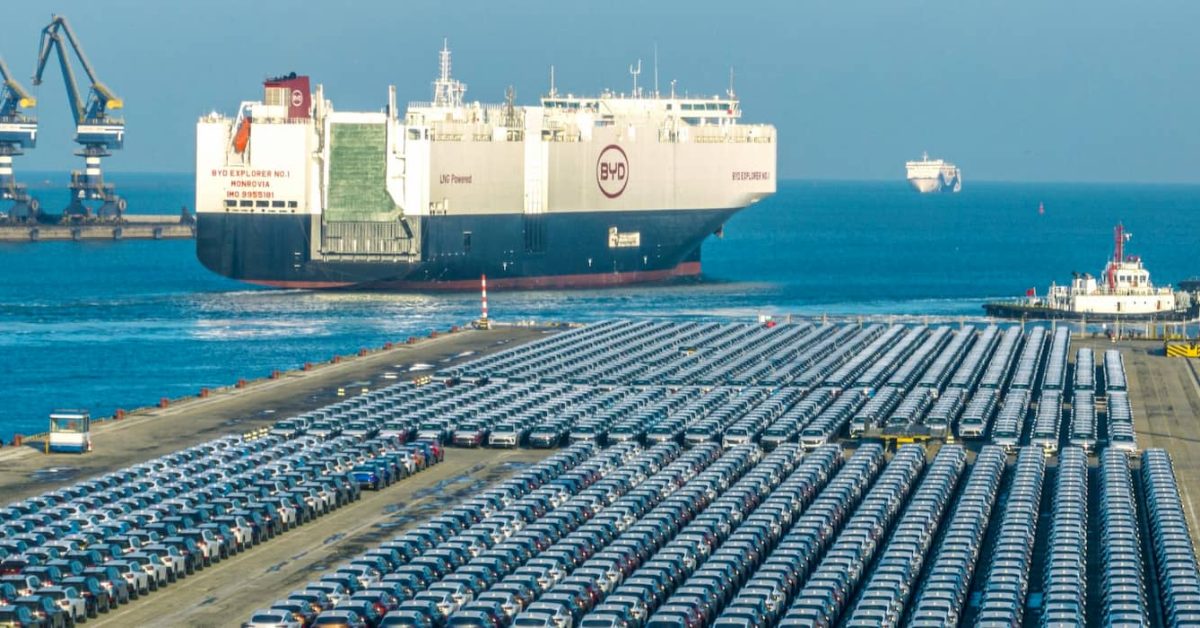EV sales continue to rise, but the last year of headlines falsely stating otherwise would leave you thinking they haven’t. After about full year of these lies, it would be nice for journalists to stop pushing this false narrative that they could find the truth behind by simply looking up a single number for once.
Here’s what’s actually happening: Over the course of the last year or so, sales of battery electric vehicles, while continuing to grow, have posted lower year-over-year percentage growth rates than they had in previous years.
This alone is not particularly remarkable – it is inevitable that any growing product or category will show slower percentage growth rates as sales rise, particularly one that has been growing at such a fast rate for so long.
In some recent years, we’ve even seen year-over-year doublings in EV market share (though one of those was 2020->2021, which was anomalous). To expect improvement at that level perpetually would be close to impossible – after 3 years of doubling market share from 2023’s 18% number, EVs would account for more than 100% of the global automotive market, which cannot happen.
Instead of the perpetual 50% CAGR that had been optimistically expected, we are seeing growth rates this year of ~10% in advanced economies, and higher in economies with lower EV penetration (+40% in “rest of world” beyond US/EU/China). Notably, this ~10% growth rate is higher than the above Norway example, which nobody would consider a “slump” at 94% market share.
It’s also clear that EV sales growth rates are being held back in the short term by Tesla, which has heretofore been the global leader in EV sales. Tesla actually has seen a year-over-year reduction in sales in recent quarters – likely at least partially due to chaotic leadership at the wayward EV leader – as buyers have been drawn to other brands, while most of which have seen significant increases in EV sales.



The brakes on my wife’s ICE minivan have more than 100k mile, while that isn’t life of the car it is close enough. Transmission oil may or may not be sealed but that is a manufacturs choice - many people never change their transmission oil and get by with it. There is nothing about a ICE vs EV that makes a difference there (the torque of an EV puts the advantage to the ICE in this case!) Spark plugs, transmission oil, and coolant are generally speced for 100k mile change intervals - by then the car is owned by someone who isn’t using the dealer for the work and so no difference to the dealer. Catalytic converter is generally a life of the car item (unless stolen - a real problem but EV parts can be stole too) - when it wears out the car has enough miles on it that the owner will just put tape over the check engine light (or if there are inspections find a way to cheat)
Yes there is a difference in maintenance costs. However as an owner of an ICE I can confidently state most of the maintenance costs are for parts that are common to both.
I’m planning on buying an EV, but so far they don’t sell an EV minivan (the Pacifica hybrid gets pathetic range on battery so I won’t count it) in the US. Charge at home would save me a lot of money. However it is the charge at home responsible for the savings, not the maintenance costs.
Pressing “X” to doubt. Pads do not last that long on a typical ICE car. Rotors can, but not pads.
So there’s a cost, but we just fob it off on the next poor bastard. Or more likely, the market for used cars has factored this in, so you’re selling it for less. Money in your pocket over time ends up the same, but by a different route.